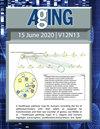CIB2 mediates acquired gefitinib resistance by inducing ZEB1 expression and epithelial-mesenchymal transition.
IF 3.9
3区 医学
Q2 CELL BIOLOGY
引用次数: 0
Abstract
EGFR-TKIs have been used as frontline treatment in patients with advanced non-small cell lung cancer (NSCLC) suffering from the EGFR mutation. Gefitinib, the first-generation EGFR-TKI, has greatly improved survival rates in lung cancer patients, whereas acquired gefitinib resistance is still a critical issue that needs to be overcome. In our research, high expression levels of CIB2 were found in gefitinib-resistant lung cancer cells. CIB2 knockout rendered gefitinib-resistant cells more sensitive to gefitinib, and overexpression of CIB2 in parental cells was sufficient to induce more resistance to gefitinib. Inhibition of CIB2 in gefitinib-resistant lung cancer cells significantly induced cell apoptosis. To clarify the major molecular mechanism by which CIB2 increases gefitinib resistance, we demonstrated that raised CIB2 in lung cancer cells promoted epithelial-to-mesenchymal transition (EMT) through upregulation of ZEB1. Moreover, FOSL1 transcriptionally regulated CIB2 expression. Finally, CIB2 rendered tumors resistant to gefitinib treatment in vivo. Our results explored a new mechanism: upregulated CIB2 promoted EMT through ZEB1 to regulate gefitinib resistance, which could be a candidate therapeutic target for overcoming acquired resistance to EGFR-TKIs in NSCLC patients.CIB2通过诱导ZEB1的表达和上皮-间质转化介导获得性吉非替尼耐药性。
表皮生长因子受体-TKIs已被用作表皮生长因子受体突变晚期非小细胞肺癌(NSCLC)患者的一线治疗药物。吉非替尼作为第一代表皮生长因子受体抑制剂(EGFR-TKI),大大提高了肺癌患者的生存率,但吉非替尼的获得性耐药仍是一个亟待解决的关键问题。在我们的研究中,吉非替尼耐药的肺癌细胞中发现了高表达水平的CIB2。CIB2基因敲除使吉非替尼耐药细胞对吉非替尼更敏感,而亲代细胞中CIB2的过表达足以诱导细胞对吉非替尼产生更强的耐药性。抑制吉非替尼耐药肺癌细胞中的CIB2能显著诱导细胞凋亡。为了阐明CIB2增加吉非替尼耐药性的主要分子机制,我们证实了肺癌细胞中CIB2的升高通过上调ZEB1促进了上皮细胞向间质转化(EMT)。此外,FOSL1转录调控CIB2的表达。最后,CIB2在体内使肿瘤对吉非替尼治疗产生耐药性。我们的研究结果探索了一种新的机制:上调的CIB2通过ZEB1促进EMT,从而调节吉非替尼的耐药性,这可能是克服NSCLC患者对EGFR-TKIs获得性耐药性的候选治疗靶点。
本文章由计算机程序翻译,如有差异,请以英文原文为准。
求助全文
约1分钟内获得全文
求助全文
来源期刊

Aging-Us
CELL BIOLOGY-
CiteScore
10.00
自引率
0.00%
发文量
595
审稿时长
6-12 weeks
期刊介绍:
Information not localized
 求助内容:
求助内容: 应助结果提醒方式:
应助结果提醒方式:


